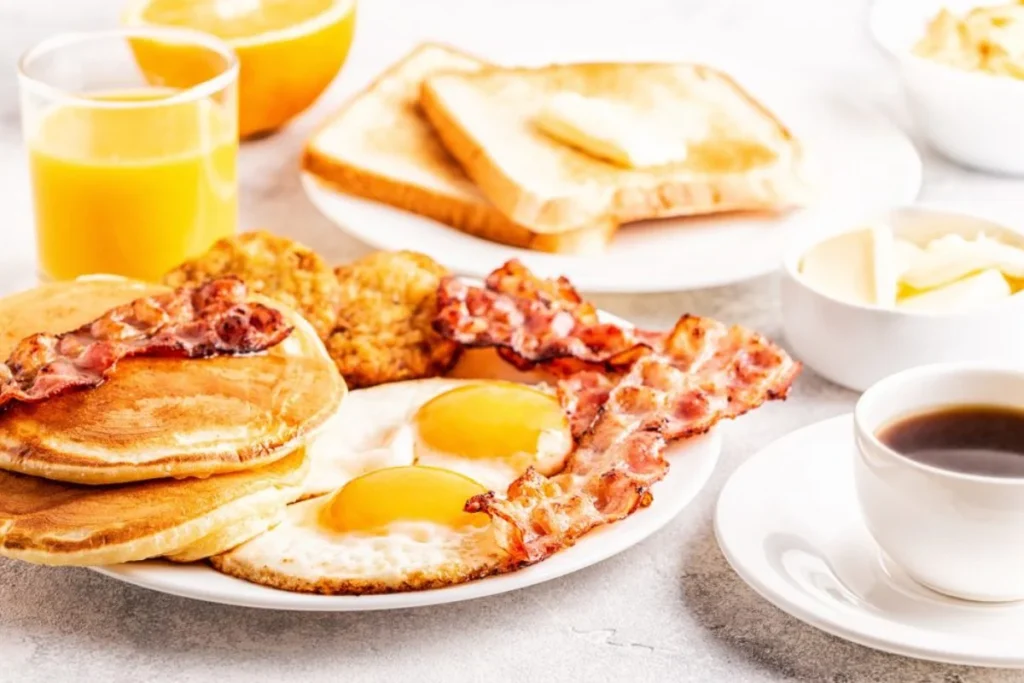People consider food to be essential; the three daily meals are the source of the body’s energy and nutrition. Among these, breakfast, often abandoned, plays a significant role in promoting health.
Research has shown that having a regular breakfast can reduce the risk of cardiovascular diseases and diabetes among the elderly.
I. Having a Good Breakfast
Breakfast is essential, but what you eat is crucial. Among the four common breakfast combinations, some may not necessarily be healthy.
- Milk + Eggs — Not Enough Energy Although milk and eggs are nutritionally rich, combining them for breakfast is not ideal. After a night of digestion, the food in your stomach is almost completely digested. In the morning, your blood sugar levels are low, and glucose is vital for maintaining normal body functions and is the brain’s primary energy source, requiring replenishment. However, the milk and eggs combination primarily provides protein and has low carbohydrate content, which makes it difficult to provide sufficient glucose. This can lead to drowsiness and poor mental clarity in the morning.
- Steamed Buns + Congee This is a common Chinese breakfast combination. However, since both are main dishes, this combination may not provide enough of the other nutrients needed for breakfast. Most main dishes contain a large amount of carbohydrates, and excessive carbohydrate intake can convert into fat within the body, increasing the risk of obesity and diseases such as fatty liver, high cholesterol, and atherosclerosis.
- Deep-Fried Dough Sticks (You Tiao) / Fried Pancakes + Soy Milk This combination of dry and thin foods is a preferred breakfast for many. However, deep-fried dough sticks (you tiao) are not recommended for regular consumption. They are deep-fried at high temperatures, which results in them absorbing a lot of oil, leading to high calorie content and a higher risk of obesity. Additionally, some deep-fried dough sticks may be purchased from street vendors, and it’s possible that the oil used is reused, potentially producing toxic and harmful substances such as trans-fatty acids and polycyclic aromatic hydrocarbons. Prolonged consumption can increase the burden on the liver and kidneys and the risk of cardiovascular diseases.
- Leftover Rice and Dishes It is common for people to use leftovers from the previous night’s dinner for breakfast. Some even cook extra food intentionally to have more leftovers for breakfast. However, when leftovers are stored for an extended period, they can produce nitrites. While nitrites themselves are not carcinogenic, they can react with proteins under the influence of stomach acid to form carcinogenic nitrosamines, increasing the risk of digestive tract cancers. Furthermore, improperly stored leftover food can be contaminated with bacteria. If not thoroughly reheated, it can lead to digestive discomfort.
II. A Well-Balanced Breakfast
A well-balanced breakfast should include at least three types of food:
- Starchy Foods — Provide Energy for the Body: Examples include bread, porridge, noodles, or steamed buns. Whole grains are even better.
- Proteins — Keep You Feeling Full: Foods like milk, eggs, soy milk, tofu, etc., are great choices. These foods slow down the emptying of the stomach, leading to longer-lasting feelings of fullness.
- Fresh Fruits and Vegetables — Supply Vitamins: Fruits and vegetables provide abundant vitamins, minerals, and dietary fiber that help maintain normal intestinal function.
If possible, you can also add some nuts to make your breakfast more nutritious.
III. Breakfast Considerations
- Drink Water Before Eating Breakfast: After a night’s sleep, your body is in a state of mild dehydration. Therefore, about half an hour before breakfast, drink around 200 milliliters of water to help lubricate your stomach and intestines.
- Finish Breakfast Before 9 A.M.: During this time, the digestive system is most active, making digestion and absorption of food more efficient. Eating breakfast too late can affect the timing and amount of your lunch.
- Don’t Walk While Eating Breakfast: When you walk while eating, the blood supply is redirected from the stomach and intestines to the leg muscles, causing inadequate blood supply to the digestive system, which can lead to indigestion and, in some cases, gastric ptosis.
